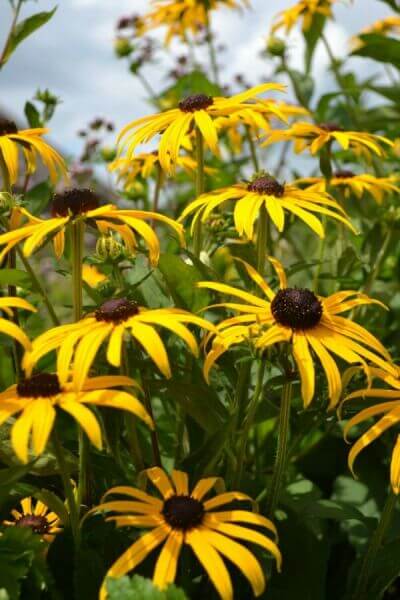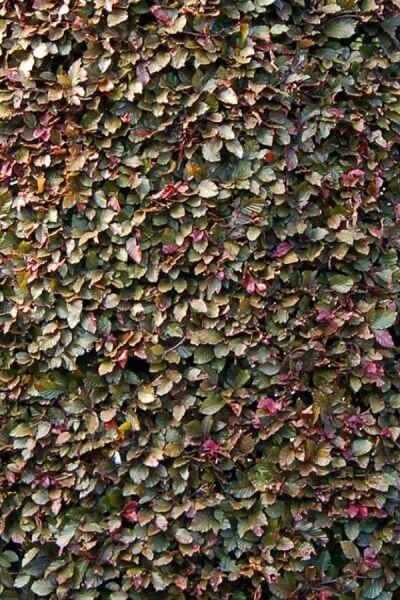Hedge Plants For Rustic Gardens
Hedge Plants For Rustic Gardens
Blog Article
Hedge Plants For Beautiful Borders
Improve your garden's allure with lush hedge ranges such as Yew (Taxus), Thuja, Laurel, Photinia, and Bamboo, commemorated for their structural stability and environmental advantages.
Yew and Thuja supply evergreen coverage and winter strength, while Laurel offers fast growth and broad, aromatic leaves.
Photinia includes seasonal charm with its dynamic red foliage, and Bamboo provides a low-maintenance, serene ambiance.
These hedges enhance air quality, decrease sound, and develop tranquil, private spaces.
Correct planting, spacing, and upkeep ensure vigorous development and ecological harmony.
Check out how these lavish varieties can elevate your garden's charm and wellness.
Secret Takeaways
Transform Your Garden With Lush Hedge Varieties
- Select Yew for its dense, evergreen development and unequaled longevity.
- Choose Laurel for its fast development and broad leaves, making sure fast privacy.
- Pick Photinia for its lively seasonal foliage, which turns a striking dark red.
- Utilize Bamboo for a low-maintenance, winter-hardy hedge with aesthetic appeal.
- Space plants 2-3 per meter and prune regularly for ideal growth and health.
Popular Hedge Plants
When transforming a garden with rich hedge varieties, it's important to consider popular hedge plants such as Yew, Thuja, Laurel, and Photinia due to their distinct qualities and advantages.
Yew (Taxus) is extremely respected for its durability and dense, green development, making it a prime option for withstanding landscapes.
Thuja is kept in mind for its evergreen foliage and robust winter season durability.
Photinia adds seasonal vibrancy with red leaves that darken gradually, developing vibrant visual appeal.
Laurel uses fast growth and fragrant, broad leaves, ideal for quick privacy.
In Addition, Bamboo is an exceptional option for atmosphere, providing a low-maintenance, winter-hardy choice that improves the garden's aesthetic with its elegant, swaying canes.
These choices deal with a variety of horticultural needs and choices.
Advantages of Garden Hedges
Garden hedges provide a wide variety of benefits, making them a valuable addition to any landscape. These natural barriers are cost-efficient to carry out and offer significant wind defense, improving air circulation and adding to sound reduction. The thick foliage of hedges like Thuja and Beech guarantees privacy by blocking exposure, developing a remote and peaceful environment.
Hedges likewise play an important role in microclimate guideline, providing a steady environment that fosters plant development and reduces temperature level changes. Their intricate leaf structures filter contaminants, improving air quality and adding to a much healthier garden community.
Additionally, hedges excel in sound reduction, soaking up and deflecting sound waves to lower ambient sound levels. This double functionality of offering both visual and acoustic privacy boosts the overall tranquility and aesthetic appeal of any garden.
Planting and Upkeep Tips
For a successful hedge, precise preparation of the planting location is crucial. Guarantee the soil has correct pH and drain to support strong root advancement.
Space the plants properly for the picked species. Water the hedge often during its preliminary development phase, changing as required with seasonal changes.
Execute a organized bug control and disease prevention technique, utilizing chemical or organic treatments when necessary. Routinely examine for aphids, termites, and fungal infections.
Apply mulch to maintain wetness and suppress weeds. Seasonal pruning promotes dense growth and air blood circulation, necessary for plant health.
Following these guidelines will assist you cultivate a vibrant, well-kept hedge that improves the charm of your garden.
Spacing and Cutting Guidelines
Spacing and Trimming Guidelines
Correct spacing and trimming are crucial for cultivating healthy, visually appealing hedges. Adequate spacing guarantees each plant receives adequate nutrients, light, and air flow.
Follow these standards for optimum hedge upkeep:
- Spacing: Position hedge plants 2-3 plants per meter to motivate robust development.
- Pruning Methods: Routine pruning is essential for keeping desired hedge height and shape. Trim new growth in summer and cut back older wood throughout winter season.
- Seasonal Care: Adjust trimming schedules and methods according to seasonal requirements to ensure plant health.
- Hedge Height: Regularly monitor and cut to keep the wanted hedge height and accomplish consistent aesthetics.
Complying with these actions will guarantee your hedge prospers, boosting both the appeal and performance of your garden.
Selecting the Right Hedge
Selecting the Right Hedge
Selecting the appropriate hedge includes assessing factors such as mature height, foliage density, and ecological durability. Successful hedge plant choice needs understanding each types' development characteristics and site-specific adaptability.
For instance, Yew (Taxus) provides exceptional durability and thick development, while Thuja is noteworthy for its winter season strength. Furthermore, thinking about upkeep requirements is crucial; fast-growing types like Laurel or Privet demand routine trimming, whereas low-maintenance alternatives like Bamboo or Ivy might be preferable for those looking for minimal upkeep.
Ecological elements such as soil type, light availability, and wetness conditions should likewise assist the selection procedure. This careful technique ensures the picked hedges will thrive, providing both functional and aesthetic advantages to the garden landscape.
Shipment and Planting Guidance
To guarantee your hedge plants thrive, they ought to be provided by specialized couriers and planted quickly upon arrival.
Follow these vital steps for effective planting:
- Soil Preparation: Enrich the soil with raw material to enhance drain and nutrient material.
- Planting Depth: Produce a trench two times the width and equal to the depth of the root ball.
- Watering Methods: Water completely after planting, keeping the soil consistently moist however not filled.
- Mulching: Use a layer of mulch to retain moisture and reduce weeds.
Consumer Assistance and Service
Given the crucial function of timely support in horticultural pursuits, our client assistance team is offered 6 days a week through telephone, email, and social media to provide skilled suggestions and swiftly address any concerns. Their dedication to quick response times ensures client fulfillment by solving queries related to plant health, optimal planting methods, and maintenance schedules.

Action Time
Within 24 hours
This extensive support group, reinforced by an outstanding 9.3/ 10 consumer rating, highlights our commitment to improving the gardening experience for each customer.
Often Asked Concerns
The Length Of Time Does It Consider Hedge Plants to Develop?
Hedge plants usually need one to 3 years to end up being totally developed, with the specific period differing by species and growing conditions.
Efficient care throughout this vital duration is vital for robust development. Consistent watering, watchful weed control, and suitable fertilizer application are pivotal in promoting strong root development.
For example, fast-growing types like Laurel might develop faster, while slower-growing ranges such as Yew might take longer. Diligent maintenance accelerates the facility procedure, leading to dense and healthy hedges.
What Are the Best Hedge Plants for Privacy?
The question of the very best hedge plants for personal privacy includes evaluating evergreen and deciduous options.
Evergreen hedges like Thuja, Laurel, and Cypress provide year-round protection, guaranteeing continuous personal privacy.
On the Additional resources other hand, deciduous hedges such as Beech offer seasonal personal privacy, shedding leaves in cooler months.
Secret maintenance pointers for personal privacy hedges consist of regular trimming, fertilizing in spring, and correct spacing-- generally 2 to 3 plants per meter.
Additionally, constant watering and persistent weed removal are important for promoting healthy, dense development.
Can Hedge Plants Draw In Wildlife to My Garden?
Yes, hedge plants can attract wildlife to your garden by offering important advantages like shelter, food, and nesting sites, therefore improving regional biodiversity. Yew, holly, and laurel are outstanding for bring in birds, while ivy supports a variety of pests.
However, it is very important to note that there are some disadvantages, such as increased maintenance to manage bugs and regular maintenance. Thoroughly picking and preserving hedge varieties can help stabilize these benefits and disadvantages, eventually cultivating a dynamic and sustainable ecosystem in your garden.
Are There Any Blooming Hedge Plants Available?
Yes, there are flowering hedge plants readily available that can enhance the charm of your garden.
For instance, Elaeagnus, likewise called Olive Willow, produces fragrant white flowers in the fall, including a touch of sophistication.
Photinia, another popular choice, showcases dynamic red leaves that develop into an abundant green, creating a dynamic visual impact throughout the seasons.
To guarantee these plants grow, it's important to practice appropriate pruning methods and seasonal upkeep, such as cutting brand-new development in the summer and cutting back in the winter.
These steps will assist preserve the health and visual appeal of your blooming hedges.
How Do I Avoid Pests in My Hedge Plants?
To prevent pests in hedge plants, utilize natural insect control techniques and preserve appropriate hedge care. Introduce useful bugs like ladybugs, which victimize damaging insects, to produce a well balanced community.
Routinely examine your hedges for signs of problem and immediately eliminate any affected parts to prevent the spread. Ensure the health of your hedges by applying well balanced fertilizers and supplying appropriate water.
Make use of mulching to keep soil moisture and proper spacing to reduce plant tension and promote robust development. These practices jointly help in reducing pest issues and keeping a healthy hedge.
Conclusion
In essence, picking the ideal hedge ranges such as Yew, Thuja, and Laurel can change any garden into a peaceful haven. These plants provide year-round plant, improve aesthetic appeal, and deal useful benefits like sound reduction and wind protection.
Proper planting techniques, precise spacing, consistent watering, and seasonal trimming are essential for ideal growth.
Reputable delivery services and professional customer assistance guarantee a smooth experience from purchase to planting, making it easier than ever to elevate your outside space.
Garden hedges use a wide variety of benefits, making them an important addition to any landscape. These natural barriers are affordable to carry out and supply significant wind defense, improving air blood circulation and contributing to noise decrease. The dense foliage of hedges like Thuja and Beech makes sure privacy by blocking presence, creating a remote and tranquil environment.

Pruning Techniques: Regular pruning is necessary for preserving desired hedge height and shape. Cut brand-new growth in summer season and cut back older wood during winter.
Report this page